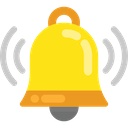I've done this on my BJ8. Yes, you have to pull the radiator, fan, etc. The big nut on the crank pulley can (will) be a bear to get off, I bought a HF 3/4" air impact wrench to do it (my DeWalt 18V 1/2" battery impact wrench is probably just as powerful, if not more so, but I didn't have it back in the day). Anything else will just rotate the engine, but others on this forum have reported techniques for locking the flywheel). I don't recall the nut size--1&11/16" comes to mind, but I'm not sure--but it's a big, usually hard-to-find one (I've never seen an impact socket in the size, but that was before Amazon). To get an impact wrench on the nut you'll probably need to raise the engine a couple inches to clear the chassis cross rail (Note: You might be able to get a socket and breaker bar on the nut without raising the engine, but I'm sure if I could I would have done so; I think the pulley might not clear anyway). It's easiest--easiest being a relative term--to unbolt the mounts at the frame; if possible, get some really long bolts--IIRC they're 3/8" fine/24 used everywhere on Healeys--and replace the 'stock' bolts one at a time with the long ones else getting the mount lined-up again can be a, well, bear (but doable). Two on each side should do it. You'll need to disconnect the tie rod on the tail end of O/D to raise the engine, and the throttle linkage lest you break or bend something. Be careful not to raise the engine so high it bends the throttle cross-shaft in the scuttle/firewall where the gearbox passes through. Put wood or other platform on your jack to spread the load on your pan; I've replaced it since, but for a while my car's pan had a perfect imprint of a 2x4 on the pan.
You'll want to replace the seal on the cover, of course, and when you get ready to bolt it up be sure to center it properly--let it find its 'home'--on the nose of the crank, there's enough slop in the bolt holes, then tighten the bolts carefully (don't overtighten lest you bend the sheet metal). Put a little grease on the seal lip so it doesn't wear on startup. BCS sells a 'strap' that connects all the bolts that should, in theory--I haven't used one--spread the tension around the edge of the cover and mitigate leaking. I usually use a thin smear of Permatex Aviation Form-A-Gasket on paper gaskets, it stays somewhat pliable and on occasion I've been able to peel a gasket off whole (theoretically, you could reuse it, but I don't). Lately, a lot of paper gaskets I've bought don't fit perfectly, so modify it if necessary and I usually buy at least two since the cost isn't as great as the time wasted ordering another.

 Hi Guest!
Hi Guest!

 smilie in place of the real @
smilie in place of the real @
 Pretty Please - add it to our Events forum(s) and add to the calendar! >>
Pretty Please - add it to our Events forum(s) and add to the calendar! >> 

